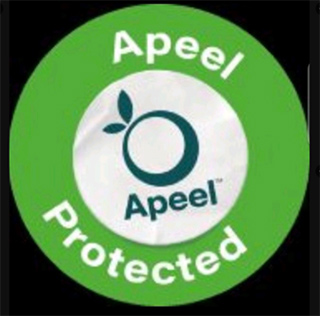Do you know what Apeel is? In an April 24, 2023, Twitter thread,1 Alexis Baden-Mayer, political director at the Organic Consumers Association (OCA), lists the many patents associated with this mysterious synthetic fruit coating, which is even approved for use on produce certified as USDA Organic.
According to Apeel Sciences’ website,2 Apeel is a plant-based protective coating that “helps the produce you love stay fresh for longer.” It retains moisture within the produce and keeps oxygen out, thereby slowing the spoilage rate.
Avocados, cucumbers, lemons and limes, mandarins, oranges, organic apples, grapefruit and mangos are listed as produce that are currently being treated with this coating.
Apeel-treated produce can be found in several large grocery chains in the U.S., including Walmart, Costco, Kroger, Trader Joe’s, Harps Food and many others,3,4 as well as stores in Germany, Denmark, Switzerland5 and Canada.6 As of October 2020, the company had also received regulatory approval in Kenya, Uganda, Costa Rica, Colombia, and Ecuador.7 Apeel-treated produce can be identified by looking for the following produce stickers.
Red Flags
One of the warning flags that makes me question the safety of this product is the fact that Apeel Sciences (a DBA or “doing business as” of aPEEL Technology Inc.) was founded with a $100,000 grant from the Bill & Melinda Gates Foundation.8 That’s never a good sign. I can’t think of a single harmless product Gates has ever willingly poured his money into.
Other investors include the Rockefeller Foundation;9 the World Bank Group; Anne Wojcicki, co-founder and CEO of the personal genomics company 23andMe; and Susan Wojcicki, former CEO of YouTube10 (she stepped down in mid-February 202311). By May 2021, Apeel Sciences was valued at $1.1 billion.12
Apeel Science’s founder, James Rogers, Ph.D., is an agenda contributor to the World Economic Forum (WEF). He’s also a WEF Young Global Leader. In 2018, Rogers stated his company would transition to using synthetic biology rather than extracting its ingredients from real food.
What’s more, Apeel Science’s founder, James Rogers, Ph.D., is an agenda contributor to the World Economic Forum13 (WEF). Among the articles he has written for the WEF is one in which he hailed COVID lockdowns as a model for future action on climate change.14 In other words, climate lockdowns.
Rogers is also a WEF Young Global Leader15 — yet another red flag. And I’m not the only one questioning the motives behind this product. “Is [Apeel] another Gates/WEF plot to destroy our health? Or a distraction from worse plots?” Baden-Mayer asks.16
Is Apeel Part of President Biden’s GMO Agenda?
One of the first things that came to mind when I heard of Apeel is that it fits right into President Biden’s recently launched agenda to turn the U.S. food supply over to the biotechnology industry. I reviewed this agenda in “Executive Order Lays Foundation for Lab-Created Foods.”
In summary, Biden’s September 2022 “Executive Order on Advancing Biotechnology and Biomanufacturing Innovation for a Sustainable, Safe and Secure American Bioeconomy”17 makes biotechnology a national priority across agencies and branches of government, including the U.S. Department of Agriculture (USDA).
In late March 2023, Biden expanded on this premise in a “Bold Goals for U.S. Biotechnology and Biomanufacturing” report.18 One of the specific goals listed in this report is “Reducing food waste by 50% by 2030.” Reducing food waste to combat climate change19 is also the premise upon which Apeel Sciences was founded, according to its website.20
Further evidence that Apeel Sciences fits into Biden’s biotech-driven food agenda is its acquisition of ImpactVision, “a software company that uses AI and machine learning to track the chemical composition of food throughout its shelf life.”21 The company has also promised to “double down on technology” through other tech acquisitions.
While reducing food waste and making fresh produce last longer are certainly sane and worthy goals, the question is, how is this being done? Seeing how Apeel’s emergence broadly coincides with Biden’s official transition into biotech-led foods, can we trust that it’s a food-based product? Or is it biotech in disguise?
What Does Apeel’s GRAS Notice Tell Us?
According to Apeel Sciences:
“Apeel adds a little extra peel on produce to slow the rate of water loss and oxidation … That extra peel is completely edible, tasteless and safe to eat. A variety of plant feedstocks can be used to create our formulations, and luckily these ingredients exist in the peels, seeds and pulp of all fruits an vegetables …
We think of these materials as building blocks, restructuring them in a way that allows us to iterate on what nature created, making our solution into a coating that can be applied to produce. So while nature is our foundation and inspiration, innovation and technology are how we apply these ingredients …”
Apeel Sciences’ Generally Recognized as Safe (GRAS) notice22 to the U.S. Food and Drug Administration, submitted in October 2019, gives us a little more. The primary component of the coating is said to be a mixture of monoacylglycerides derived from grapeseed.
An earlier GRAS Notice,23 filed in April 2016, further specifies that the two primary components of Apeel is 2,3-dihydroxypropyl palmitate and 1,3-dihydroxypropan-2-yl palmitate. (In this notice, the product is called “Edipeel,” but the website now refers to it as “Apeel,” like the company name.) According to the 2016 GRAS Notice No. 648:
“Monoacylglycerol derivatives are components of dietary fats commonly found in food and are also endogenously formed in the human body … It is well established and recognized that monoacylglycerides, the subject of the present GRAS assessment, are formed in the gastrointestinal tract from the generally accepted metabolic pathway for the breakdown of triglycerides (i.e., lipolysis).
The hydrolysis of triglycerides by lipases proceeds through the formation of monoacylglycerides (i.e., monoglycerides). The free fatty acids released can be further used for triglyceride synthesis.
Given the metabolic sequel described above, and by applying scientific procedures, it can be concluded that a mixture of monoacylglycerides would not pose any health hazards different from commonly consumed dietary oils derived from plants or animals.”
Toxic Residues
However, just because something is made from all-natural ingredients doesn’t mean the final product is perfectly safe. It depends on what you’ve done to those ingredients.
In this case, in Part 3 of the 2019 GRAS notice,24 under Maximum Limit of Residues, we find that the grape seed oil that makes up the basis of this product contains residues of ethyl acetate, heptane and palladium, which are processing aids, as well as the heavy metals arsenic, lead, cadmium and mercury.
According to Apeel, the levels of these toxic residues are either below levels deemed safe by the FDA, the EU and/or the Joint FAO/World Health Organization Expert Committee on Food Additives (JECFA). The following table lists the maximum daily exposure limits based on a maximum daily (90th percentile) intake of 218 milligrams per person per day.
While the levels indeed appear to be very low, I would argue that any exposure to toxic chemicals and metals is an unnecessary risk. To me, intentionally coating fresh, unadulterated foods with something that contains toxins, even if in minute amounts, only adds to the toxic burden. We’re already dealing with pesticide residues on conventional fruits and vegetables. This coating will simply lock those toxins in and add additional ones on top.
One of the biggest question marks is whether this coating can penetrate the peel, as the coating cannot be washed off. Can toxic risks be eliminated by peeling the produce, or is the flesh of the fruit or vegetable also contaminated with residues? We do not have the answer to that question, even though it’s one of the most important ones.
According to Apeel Sciences, the coating is “not expected” to penetrate beyond the peel into the fruit.25 Not expected? That means they have no idea. They’re simply guessing.
More Open Questions
In Apeel Sciences’ 2019 GRAS notice, they referenced a 2017 EFSA review26 of E471 (mono- and diglycerides of fatty acids) but didn’t mention that this review warned about the possible presence of epichlorohydrin,27 a carcinogen, in E471 manufactured using glycerol or glycidol as a starting material. Apeel uses monoglycerides of glycerol.
According to this review, “The panel considered that the presence of epichlorohydrin and/or glycidol in mono- and di-glycerides of fatty acids (E 471) would need further assessment as their presence could raise a safety concern.” Palladium, cadmium and arsenic are also carcinogenic, so there are at least four different carcinogenic contaminants in this coating.
What’s more, a 2021 European Food Safety Authority (EFSA) re-review28 of monoacylglycerides found that “the potential exposure to toxic elements resulting from the consumption of E 471 could be substantial.” As a result, the review panel suggests it may be necessary to lower existing limits for arsenic, lead, cadmium and mercury.
Apeel Plans to Switch to Synthetic Biology
Baden-Mayer also wonders whether Apeel’s coating is made with synthetic biology. Why else is Apeel Sciences listed as one of the best-funded synbio companies?29 Don’t you have to produce synthetic biology products to be considered a synbio company?
In 2018, the Apeel founder himself also told Food Navigator that his company would soon transition to using synthetic biology rather than extracting its ingredients from real food.30 So, even if they haven’t made that transition yet, this certainly suggests they intend to, eventually.
Apeel’s GRAS notice also leaves this door open, stating that “monoacylglycerides can be created by breaking down a triglyceride by removing two of its fatty acids or they can be manufactured synthetically.”
Finally, Apeel Sciences’ board of directors includes Vijay Pande,31,32 an adjunct professor of bioengineering at Stanford, who also serves on the board of Scribe Therapeutics, a company specializing in CRISPR technology and protein engineering. Pande is also the founder of Globavir Biosciences, an infectious disease start-up.
So, it certainly appears as though Apeel Sciences is geared up to move into genetically engineered synthetic biology, if they haven’t made that leap already. The company is even directly connected to a company specializing in infectious disease therapeutics, and we now know there are efforts underway to turn foods into vaccine vectors.
Invisipeel — Another Type of Coating
As mentioned earlier, aPEEL Technology Inc. is producing the Apeel coating for fresh produce under the business name Apeel Sciences. But that’s not aPEEL’s only product.
In August 2015 — three years after the Gates Foundation launched Apeel Sciences with a $100,000 grant — the Gates Foundation committed nearly 10 times that amount, $985,161, to aPEEL Technology Inc., not Apeel Sciences, to develop a crop coating:33
“… to extend the shelf-life of crops without refrigeration and protect them from being eaten by pests by developing a molecular camouflage that uses cutin from plant extracts to create an edible, ultrathin barrier on the crop surfaces.”
Cutin is a waxy polymer and a primary component of the plant cuticle. It covers all aerial surfaces of all plants. It’s insoluble and therefore has a waterproof quality. The Apeel product described in the GRAS applications filed by Apeel Sciences do not mention anything about cutin, so this is a different product.
According to Weston A. Price,34 this product is called Invisipeel, and is applied by growers while the crop is still in the field. Apeel is applied after harvest once the produce is ripe. In short, we may be eating food that has been coated not just once but twice.
Is Apeel Just Another Trans Fat Alternative?
Aside from potentially toxic contaminants, others who have investigated Apeel have highlighted other problems and warn that monoglycerides and diglycerides are a “go-to replacement for deadly trans fats.”35
In 2016, the FDA withdrew the GRAS status of trans fat as it was strongly linked to fatal heart attacks. Yet here we are again. Out with one toxic fat and in with another. The FDA ban doesn’t apply to mono- and diglycerides, even though they contain trans fat, because they’re classified as emulsifiers rather than lipids.
Mono- and diglycerides are byproducts from the processing of oil. In the case of Apeel, the monoacylglycerides are derived from grapeseed oil, which is loaded with polyunsaturated fats (PUFAs), including the highly problematic linoleic acid, which I’m convinced is one of the primary drivers of chronic disease. You can learn more about this in “How Linoleic Acid Wrecks Your Health.”
So, basically, what we’re looking at here is a way to turn fruits and vegetables, known for their beneficial impacts on heart health, into a source of harmful emulsifiers that increase your risk of heart disease, heart attack and stroke. This starts to feel even more diabolical when you consider that the Great Resetters of the world are pushing to replace meat and animal products with plant foods, which they are simultaneously making more toxic and less healthy.
Commonsense Ways to Make Produce Last Longer
As noted by Moms Across America, there are far safer, natural ways to extend the shelf life of your fruits and vegetables. Below are a few of their tips.36 Additional suggestions can be found in Almanac.com’s fruit and vegetable storage guide.37
“Take avocados for example … Once you bring them home and they get to their ‘sweet spot,’ you can store them in the refrigerator for up to two weeks. You can also freeze them whole, sliced, in chunks, or mashed. They will keep for three to six months.
Heavenly, succulent strawberries can be briefly soaked in a vinegar and water solution to be cleaned thoroughly. Let them dry completely, and store in a mason jar (with a paper towel at the bottom) in the refrigerator for three weeks or more. Sweet, colorful apples can be stored in a cool, humid place such as a basement, garage, or refrigerator for up to five months.”
I have also found that if you purchase avocados on sale you can select rock hard fruits and store them in the fridge for around one month. You only need to take them out of the fridge for around three days before they ripen.
It’s worth mentioning, in closing, that the best way to gauge the freshness of a fruit or vegetable is to inspect it visually. If it’s been sealed shut with a coating that delays the decay process, you can’t tell how long that produce has been sitting around.
What’s more, if the produce is coated before it’s ripe, will it ever fully ripen? Many fruits and vegetables are picked and shipped before they’re fully ripened. They ripen en route. This is one of the reasons why so many fruits are tasteless and don’t have the right texture. Will Apeel make this situation better or worse? Personally, I won’t be buying Apeel-treated produce, and if enough of us refuse to buy it, they’ll stop using it.




